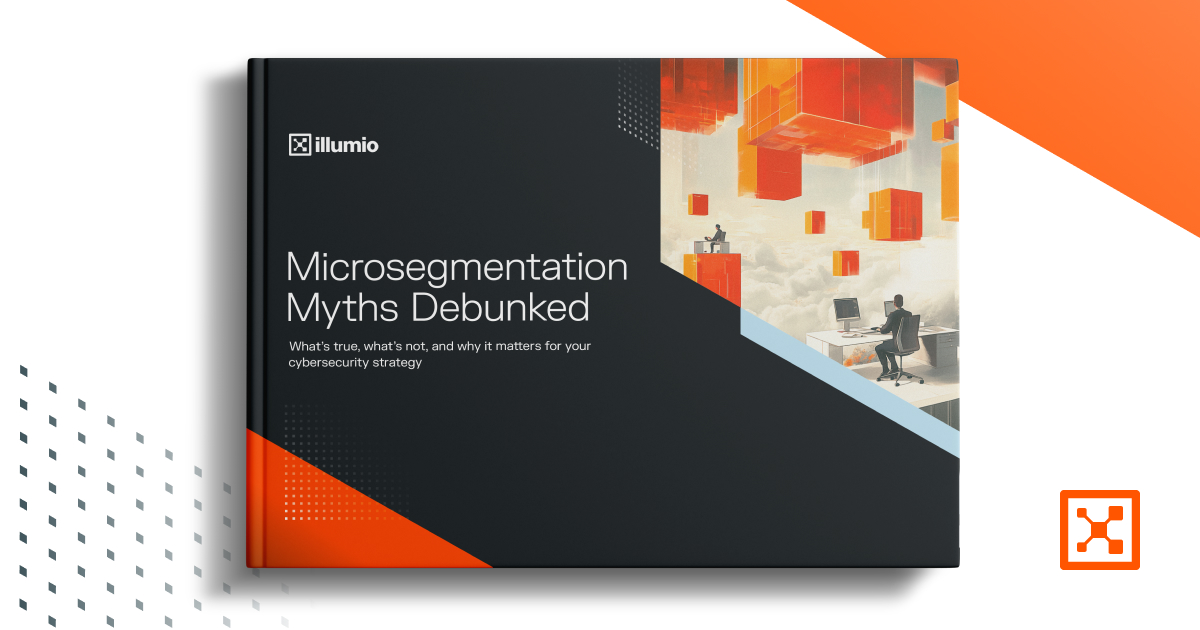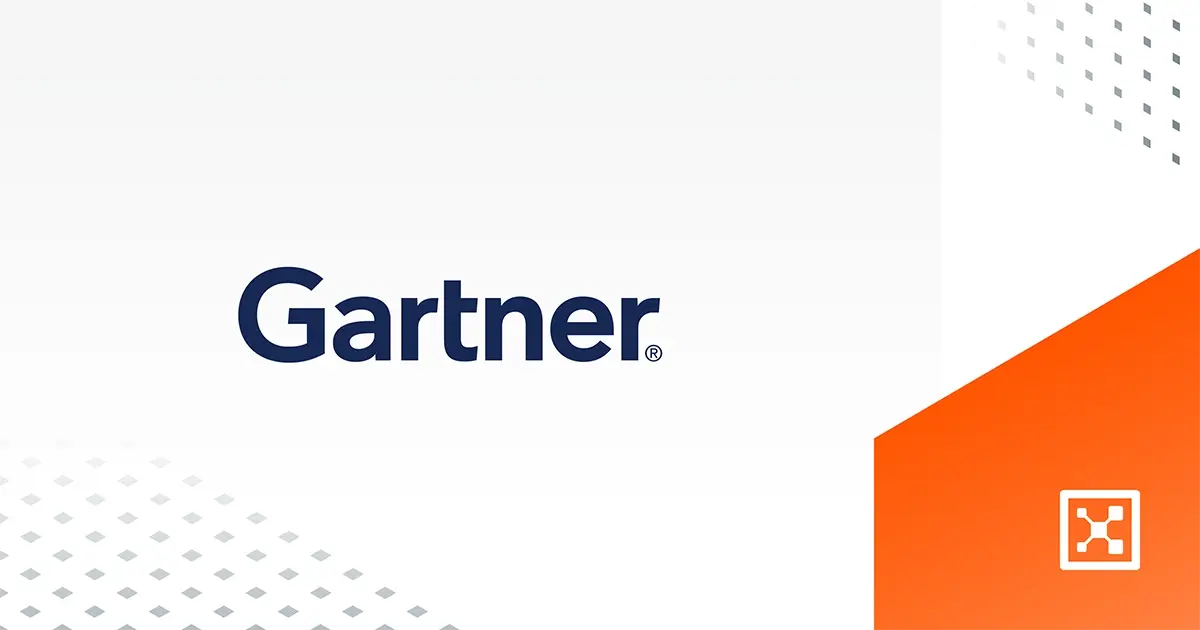Microsegmentation: The Key to Modern Cybersecurity
In today's digital world, cyber threats are getting more advanced. Traditional security methods, like building strong perimeter defenses, are no longer enough to keep data safe. That's where microsegmentation comes in.
This powerful strategy helps protect networks and important assets by breaking networks into smaller, isolated parts. This approach strengthens defenses, limits the spread of potential attacks, and supports a Zero Trust security approach.
Let's break down what microsegmentation is, its benefits, and why solutions like Illumio are leading the way.
What is microsegmentation?
To answer this, we often refer to a common example: how a submarine uses compartments to remain seaworthy in the face of a breach in one compartment. The breach is contained to that single compartment and the submarine does not sink. This is thanks to the compartmentalization (or segmentation) of the vessel.

Microsegmentation means splitting a network into smaller, separate sections that are isolated from each other. Unlike older methods that divided networks into broad zones (like guest Wi-Fi vs. company intranet), microsegmentation works at a much more detailed level. It can isolate specific workloads, applications, and even individual devices. The main goal is to stop attackers from moving freely within the network. If one part is attacked, the rest of the network remains safe.
Breaking down the basics
- Granular control: Microsegmentation focuses on specific workloads, applications, or devices.
- Strict policy enforcement: It enforces strong security rules, allowing only approved communications between network segments.
- Adapts to changes: Unlike traditional firewalls, microsegmentation works well in changing environments, including cloud and hybrid setups.
With these fundamentals established, let’s delve deeper into how this technique is revolutionizing cybersecurity strategies across industries.
The benefits of microsegmentation
Microsegmentation is a major part of any Zero Trust strategy. Here’s why it’s important:
1. Better security posture
Microsegmentation makes networks safer by breaking them into smaller sections. It keeps threats from spreading if one part of the network is attacked. For example, if malware gets into one section, it is trapped and can’t move to other parts. This helps protect important information and keeps the business running smoothly.
2. Regulatory compliance
Many industries have strict rules for data protection, like GDPR, HIPAA, or PCI-DSS. Microsegmentation helps meet these rules by keeping sensitive data separate and tracking access. It makes it easier to pass compliance checks and avoid expensive fines or penalties.
3. Faster response to threats
When a cyberattack happens, microsegmentation helps contain the problem. Security teams can quickly find the affected area, see how bad it is, and fix it without risking the whole network. This quick response reduces downtime and keeps important operations running.
4. Saving money
While setting up microsegmentation may cost money at first, it can save money in the long run. It helps avoid big losses from data breaches, fines for not following rules, and other costly problems. By keeping breaches small, businesses can protect their money and reputation.
5. Adaptability to modern architecture
Microsegmentation is great for different types of technology setups, including cloud and hybrid environments. Tools like Illumio’s platform work across all kinds of systems, keeping security strong no matter where the data is stored. This makes it a smart choice for businesses with complicated IT needs.
6. Better visibility and control
Microsegmentation gives businesses a clear view of network traffic. It shows how data moves and helps find unusual activity. By seeing potential problems early, companies can fix security issues and keep their networks safe from new threats.
Illumio microsegmentation: A game changer
Illumio is a top choice for microsegmentation because it offers strong tools to meet today's cybersecurity needs. Here's how Illumio helps businesses:
- See network traffic: Illumio shows how different parts of the network talk to each other, helping find hidden security risks.
- Set strong security controls: It creates strict controls to make sure only approved connections are allowed.
- Easy setup: Illumio’s system doesn’t need complicated hardware changes, so it’s quick to get started.
- Grows with your needs: As a business expands, Illumio adjusts to new needs without lowering security.
Use cases highlighting Illumio’s impact
1. Healthcare compliance
A hospital uses Illumio to keep patient records separate from other parts of its network. This helps meet HIPAA rules and keeps sensitive medical data safe. Dive deeper into how Illumio’s microsegmentation solution benefits the Healthcare industry.
2. Financial data protection
A bank uses microsegmentation to protect its payment systems from ransomware attacks. This keeps customer data secure and builds trust and reliability. Discover how microsegmentation helps the Financial Services industry.
3. Cloud migration security
An online store moving to a multi-cloud setup uses Illumio to keep security strong across AWS, Azure, and on-site systems. This ensures smooth and safe operations.
4. Zero Trust transformation
A manufacturing company uses Illumio to secure its IoT devices and important technology systems. This helps reduce the chance of supply chain attacks. ive deeper into how Illumio benefits the Manufacturing industry.
5. DevOps integration
A software company uses Illumio to keep its development and production environments separate. This prevents unauthorized access during the development process and makes the team more efficient.
6. Higher education security
A university uses Illumio to protect research data, meet grant requirements, and keep intellectual property safe.
Microsegmentation vs. Zero Trust: Are they the same?
Microsegmentation and Zero Trust are similar, but they are not the same thing. You can think of microsegmentation as a helpful tool that is part of the bigger Zero Trust security approach. Here's how they compare:
In simple terms, microsegmentation works well with Zero Trust by focusing on network security, while Zero Trust covers a bigger overall security plan.
How does microsegmentation work?
Implementing microsegmentation involves a few key steps:
1. Map network traffic
Use tools like Illumio to see how different parts of the network communicate. This helps make sure important connections are not missed.
2. Define policies
Create rules about which systems and applications can connect with each other. These rules should follow the "least privilege" idea, meaning only necessary connections are allowed to reduce risks.
3. Apply controls
Use software tools to apply these rules without causing major disruptions. Illumio makes this process easy and able to grow with your needs.
4. Monitor and adjust
Keep an eye on network activity and adjust rules as needed. This helps maintain strong security as new threats and changes happen.
5. Educate and train teams
Make sure IT and security staff know how to use microsegmentation tools and understand best practices. This helps prevent mistakes that could weaken security.
Microsegmentation frequently asked questions (FAQs)
Question: 1. What is microsegmentation in networking?
Answer: Microsegmentation means breaking a network into smaller parts to improve security and stop threats from spreading.
Question: 2. How does Illumio microsegmentation work?
Answer: Illumio uses software to show network traffic, set security rules, and apply them across different environments.
Question: 3. Is microsegmentation part of Zero Trust?
Answer: Yes, microsegmentation is an important part of Zero Trust. It helps secure network traffic and limits how far threats can move within a network.
Question: 4. What’s the difference between microsegmentation and traditional segmentation?
Answer: Traditional segmentation divides networks into broad sections, like VLANs. Microsegmentation goes further, allowing control down to specific applications and workloads.
Question: 5. Can microsegmentation work in cloud environments?
Answer: Yes! Tools like Illumio are made to secure both hybrid and multi-cloud systems.
Question: 6. What industries benefit most from microsegmentation?
Answer: Industries with strong security and compliance needs, like healthcare, finance, and manufacturing, see the most benefits.
Question: 7. Is microsegmentation expensive to implement?
Answer: There may be an initial cost, but it can save money over time by preventing breaches and avoiding fines.
Question: 8. Does microsegmentation affect network performance?
Answer: If done right, microsegmentation has little effect on performance, especially with tools like Illumio.
Question: 9. How long does it take to implement microsegmentation?
Answer: The time can vary, but Illumio’s platform is built for fast deployment without big infrastructure changes.
Question: 10. What’s the future of microsegmentation?
Answer: As cyber threats grow, microsegmentation will likely become a common practice for securing modern networks.
Conclusion
Microsegmentation isn't just a trendy cybersecurity buzzword — it's a must-have for cybersecurity today. By breaking networks into smaller parts, setting strong security rules, and using a Zero Trust approach, businesses can stay ahead of cyber threats. With tools like Illumio's platform, companies can boost their security, meet compliance rules, save money, and make sure their networks are ready for the future.
Ready to make the leap? It's time to explore the power of microsegmentation.
.png)

.webp)

.webp)
.webp)




%2520(1).webp)





